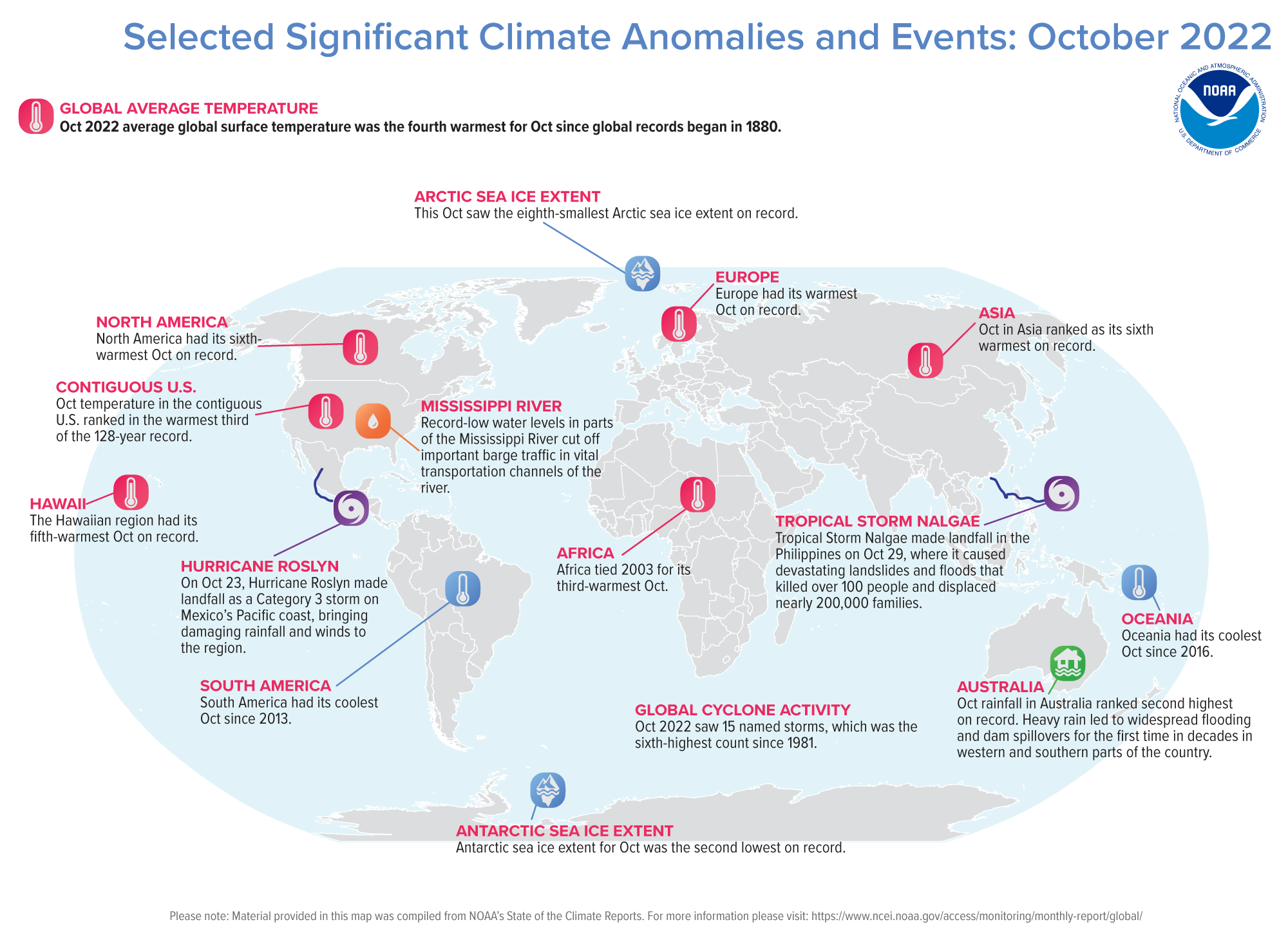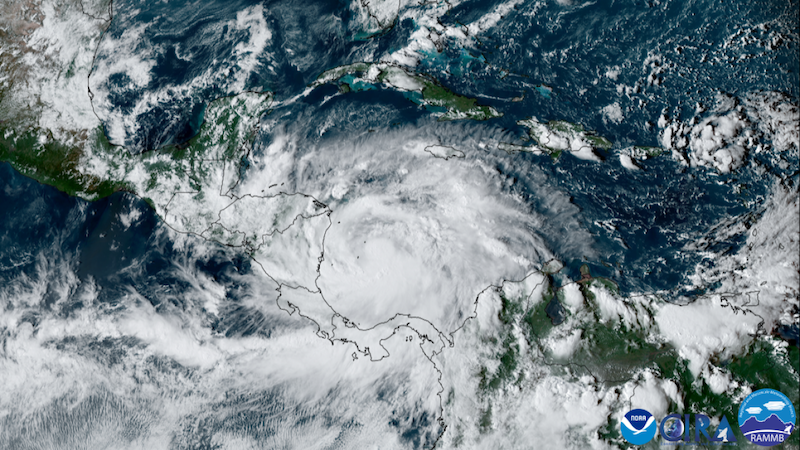The planet added another warm month to a warm year, with October 2022 ranking as the world’s fourth-warmest October in 143 years, the National Oceanic and Atmospheric Admistration announced last week.
Notably, the Northern Hemisphere saw its second-warmest October and Europe saw its warmest October on record, according to scientists from NOAA’s National Centers for Environmental Information (NCEI).
Below are more highlights from NOAA’s October global climate report:
Climate by the numbers
October 2022
The average global temperature for October was 1.60 degrees F (0.89 of a degree C) above the 20th century average of 57.1 degrees F (14.0 degrees C), ranking as the world’s fourth-warmest October on record behind 2015 (warmest), 2019 (second warmest) and 2018 (third warmest).
Looking regionally, the Northern Hemisphere had its second-warmest October on record, just behind October 2015. Europe had its warmest October on record, Africa tied 2003 for its third-warmest October, while North America and Asia each had their sixth-warmest Octobers on record.
Last month was the 46th consecutive October and the 454th consecutive month with temperatures above the 20th-century average.
The year to date (YTD, January through October 2022)
The YTD average global temperature was the sixth warmest on record at 1.57 degrees F (0.87 of a degree C) above the 20th-century average.
According to NCEI’s Global Annual Temperature Outlook, there is a greater than 99% chance that 2022 will rank among the 10-warmest years on record, and less than a 2% chance that it will rank among the top five.

Other notable climate events
Sea ice coverage remained low: Globally, October 2022 saw the fifth-lowest October sea ice extent (coverage) on record. Arctic sea ice coverage ranked as the eighth lowest in the satellite record — about 880,000 square kilometers (340,000 square miles) below the 1991-2020 average. Antarctica had its second-smallest October sea ice coverage on record, about 820,000 square kilometers (320,000 square miles) below the 1991-2020 average.
The tropics were active: October 2022 saw 15 named storms — the sixth-highest October count since 1981. However, since only five of those storms reached tropical cyclone strength (74 mph or higher), and two reached major tropical cyclone strength (111 mph or higher), the number of tropical cyclones and major tropical cyclones were both below 1991-2020 averages. The Atlantic had near-normal activity with three named storms including one hurricane, Julia. The East Pacific had four named storms and the West Pacific had seven, both above-normal counts for the month.
More > Access the October climate report and download images from the NOAA NCEI website.




